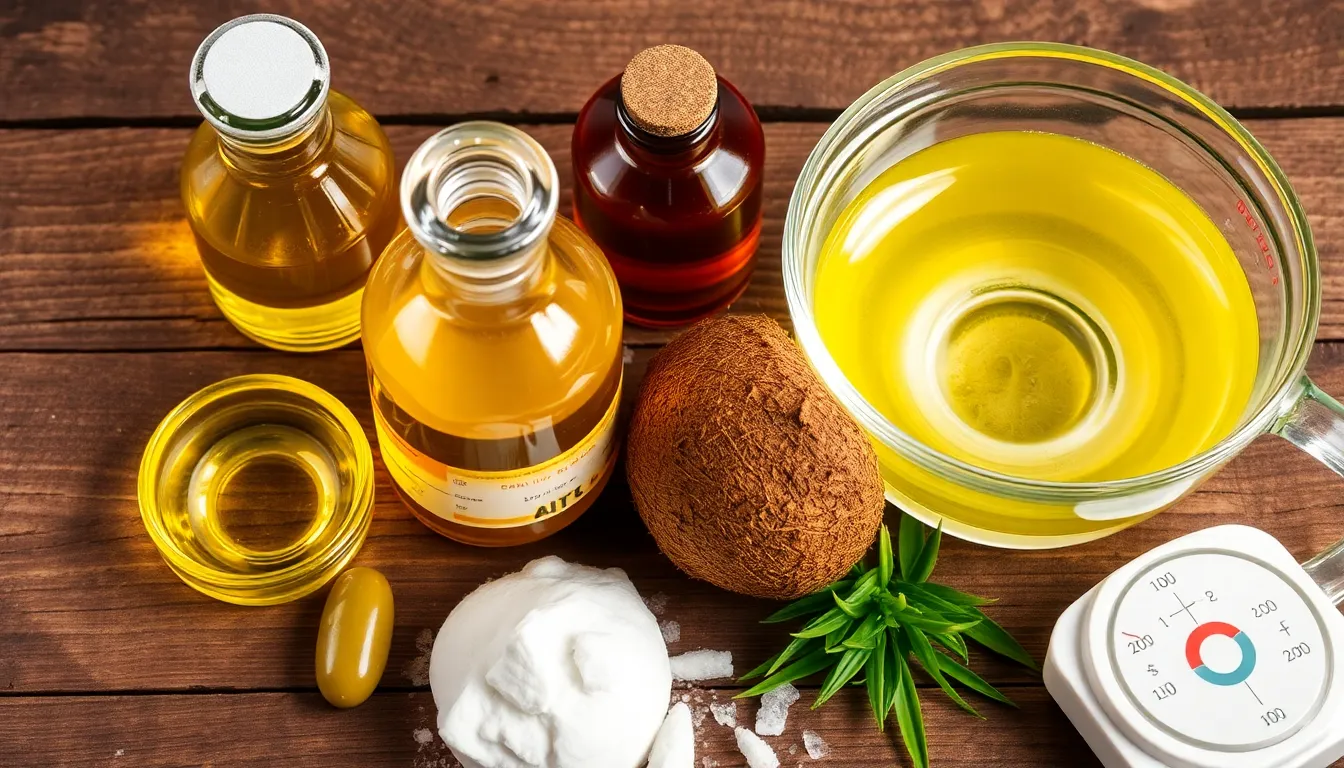Imagine a world where oils and fats transform into soap, all thanks to a magical process called saponification. This fascinating reaction might sound like something out of a science fiction novel, but it’s very much real, and it’s the secret behind the sudsy goodness we use every day. Whether it’s the luxurious bar in your shower or the bubbly liquid in your kitchen, saponification is the unsung hero of cleanliness.
But wait, there’s more! Saponification isn’t just about getting rid of grime; it’s a blend of chemistry and artistry. With the right ingredients, anyone can whip up their own soap, turning mundane bath time into a creative adventure. Get ready to dive into the bubbly world of saponification, where science meets self-care, and discover why this age-old technique is making a splash in modern homes.
Table of Contents
ToggleUnderstanding Saponizacao
Saponization represents the process where oils and fats undergo transformation into soap. This chemical reaction combines a fatty acid with an alkali, leading to the formation of glycerol and soap.
Definition of Saponizacao
Saponization, often known as saponification, is a crucial chemical reaction. It involves the hydrolysis of fats or oils in the presence of a strong base. Common bases include sodium hydroxide or potassium hydroxide. Heat often assists the process, breaking down triglycerides into their constituent fatty acids and glycerol. This reaction creates soap, which possesses unique emulsifying properties that facilitate the cleaning process.
Historical Context
Saponization can trace its origins back thousands of years. Ancient civilizations, such as the Babylonians and Egyptians, produced rudimentary forms of soap from animal fats and wood ashes. Historical records document these practices, revealing that Romans also engaged in soap-making. As trade expanded during the Middle Ages, additional ingredients and processes emerged, enhancing soap’s quality and accessibility. By the 19th century, industrial advancements revolutionized saponization, enabling mass production, which led to soap becoming a staple in households worldwide.
The Saponizacao Process

Saponization transforms oils and fats into soap through a fascinating chemical reaction. Understanding this process reveals how simple ingredients lead to effective cleaning products.
Ingredients Involved
Essential ingredients in saponization include oils, an alkali, and water. Common oils used, such as olive oil, coconut oil, and palm oil, contribute unique properties to the soap. Sodium hydroxide suits solid soaps, while potassium hydroxide is ideal for liquid soaps. Water facilitates the reaction, enabling the alkali to dissolve and interact with fat molecules. Accurate measurements are crucial; typically, a ratio of 1:1.4 fat to alkali maximizes saponification efficiency.
Step-by-Step Procedure
Starting the saponization process involves gathering ingredients and equipment. First, weigh the oils and prepare the alkali solution, mixing the alkali gently with water to avoid splashes. Next, heat the oils until they reach a temperature of about 100°F. Gradually combine the alkali solution with the heated oils, stirring continuously until the mixture reaches trace, indicating emulsification. Pour the mixture into a mold after achieving the desired consistency. Finally, let the soap cure for four to six weeks, ensuring it hardens properly for safe use.
Applications of Saponizacao
Saponification plays a crucial role in both crafting handmade products and industrial applications. Understanding its diverse applications enhances appreciation for this age-old process.
In Soap Making
In soap making, saponification transforms oils and fats into functional soap. Artisans utilize various oils, including olive, coconut, and palm, to create unique formulations. Each oil contributes distinct properties, such as lather and moisturizing benefits. Crafting soap allows individuals to personalize their creations with scents and colors, making it an artistic endeavor. Different recipes offer flexibility, allowing for experimentation with techniques and ingredients. This creative process not only produces cleansing products but also nurtures a deeper understanding of chemistry.
In Industrial Uses
In industrial uses, saponification serves as the foundation for large-scale soap production. Manufacturers adopt continuous saponification processes to enhance efficiency. This method enables the conversion of bulk oils into soap on an industrial scale, meeting higher demand. Industrial soaps often feature additives, such as fragrances and preservatives, to improve usability and shelf life. Additionally, saponification finds applications in other industries, including cosmetics, detergents, and personal care. These sectors leverage soap’s properties for emulsifying, cleansing, and stabilizing formulations, showcasing its versatility.
Benefits and Challenges of Saponizacao
Saponification offers numerous advantages, enhancing both personal care and industrial applications.
Advantages
Natural ingredients like olive and coconut oils provide moisturizing properties, making handmade soap beneficial for skin health. Creative freedom allows artisans to customize scents and colors, leading to unique products that reflect individual preferences. Environmental sustainability emerges as another key benefit, as saponification often utilizes biodegradable materials. Cost-effectiveness arises for individuals making soap at home compared to commercial products. Educational opportunities abound as the process teaches chemistry fundamentals, deepening understanding of natural reactions.
Potential Challenges
Challenges surface during the saponification process, mainly involving safety precautions. Handling caustic substances like sodium hydroxide requires diligence to prevent burns and injuries. Accurate measurements are crucial; improper ratios can lead to incomplete saponification, impacting soap quality. Curing time of four to six weeks may deter those seeking immediate results. Additionally, color and scent consistency can present difficulties, especially when using natural additives. Lastly, access to quality ingredients may prove challenging for some, depending on local availability.
Saponification offers a fascinating blend of science and creativity that enriches personal care routines. This age-old technique not only provides an avenue for crafting unique soap but also promotes sustainability through the use of natural ingredients. As more individuals embrace the art of soap-making, they discover the joys of customization and the satisfaction of creating something beneficial for their skin and the environment.
Navigating the challenges of saponification can lead to rewarding experiences that deepen one’s understanding of chemistry. Whether for personal use or as a burgeoning business, the versatility of saponification continues to inspire enthusiasts around the world. Embracing this process opens doors to both creativity and knowledge, making it a valuable skill in today’s eco-conscious landscape.









